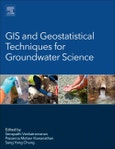GIS and Geostatistical Techniques for Groundwater Science provides a detailed synthesis of the application of GIS and geostatistics in groundwater studies. As the book illustrates, GIS can be a powerful tool for developing solutions for water resource problems, assessing water quality, and managing water resources. Beginning with an introduction to the history of GIS and geostatistical techniques in groundwater studies, the book then describes various spatial techniques, including case studies for various applications, from quality assessment, to resource management. This book assembles the most up-to-date techniques in GIS and geostatistics as they relate to groundwater, one of our most important natural resources.
Please Note: This is an On Demand product, delivery may take up to 11 working days after payment has been received.
Table of Contents
Introduction and History of GIS and Geostatistical Techniques in Groundwater Science 1. Fundamentals of GIS 2. General Introduction of Geostatistical Techniques 3. History of GIS and Geostatistical techniques in groundwater science 4. Merits and Demerits of GIS and Geostatistical Techniques
Types of Geospatial Analysis Techniques 5. Introduction of various spatial analyses 6. Inverse distance weighted and Kriging 7. Spline 8. Fuzzy 9. Cluster and Grouping Analysis 10. Correlation and Regression 11. Time Series Analysis 12. Artificial Neural Network
Groundwater quality assessment using GIS and Geostatistical aspects 13. Groundwater contaminations related with climate change 14. Groundwater quality contamination related with urbanization 15. Groundwater and Surface Water Interaction 16. Groundwater Contamination Related to Seawater Intrusion 17. Organic Contamination (Hydrocarbon, LNAPL, DNAPL) 18. Fluoride contamination 19. Arsenic contamination 20. Heavy metal contamination
Application of GIS and Geostatistical techniques in groundwater resources management 21. Groundwater, River basin, Watershed management 22. Water management for agricultural utilization








